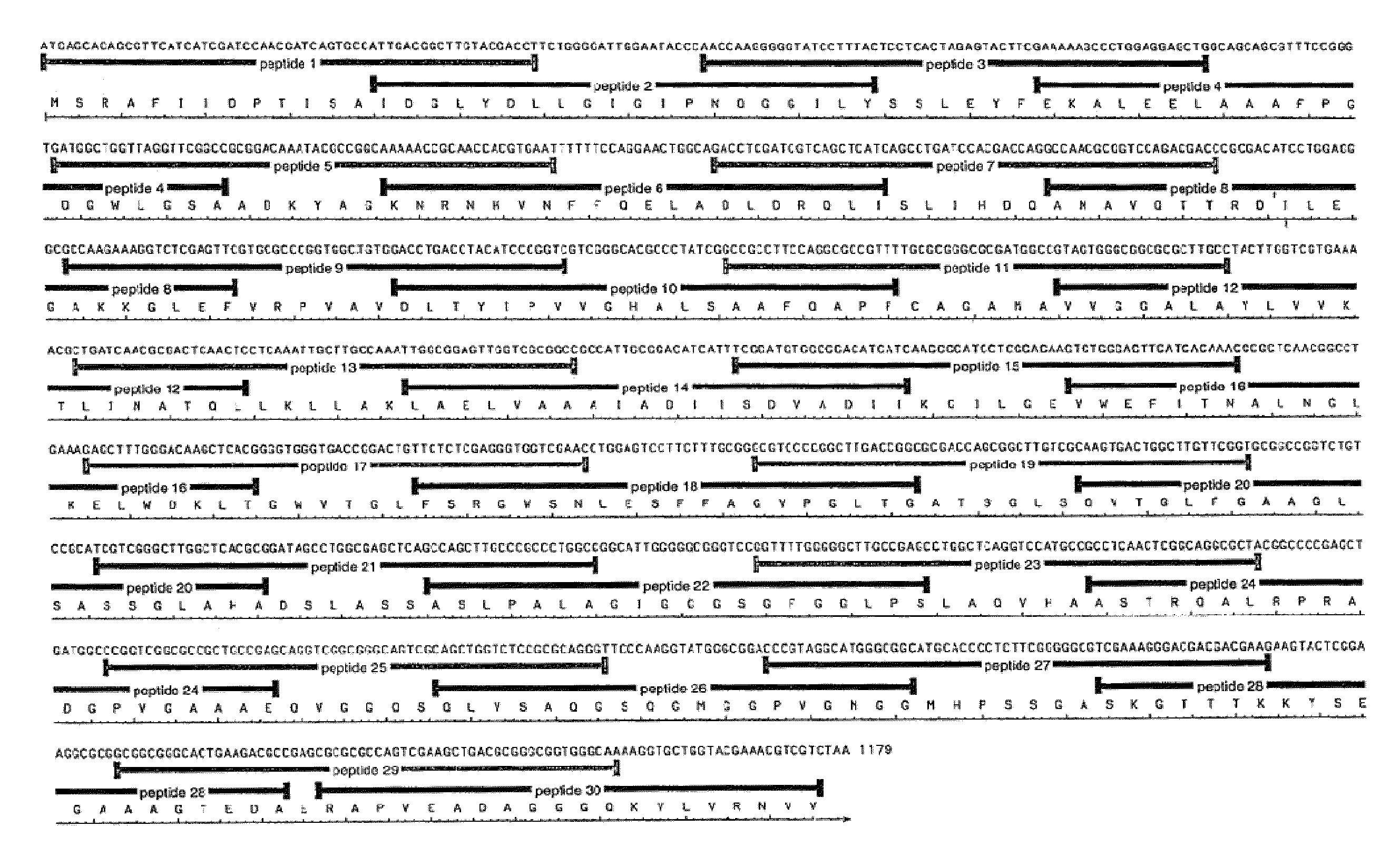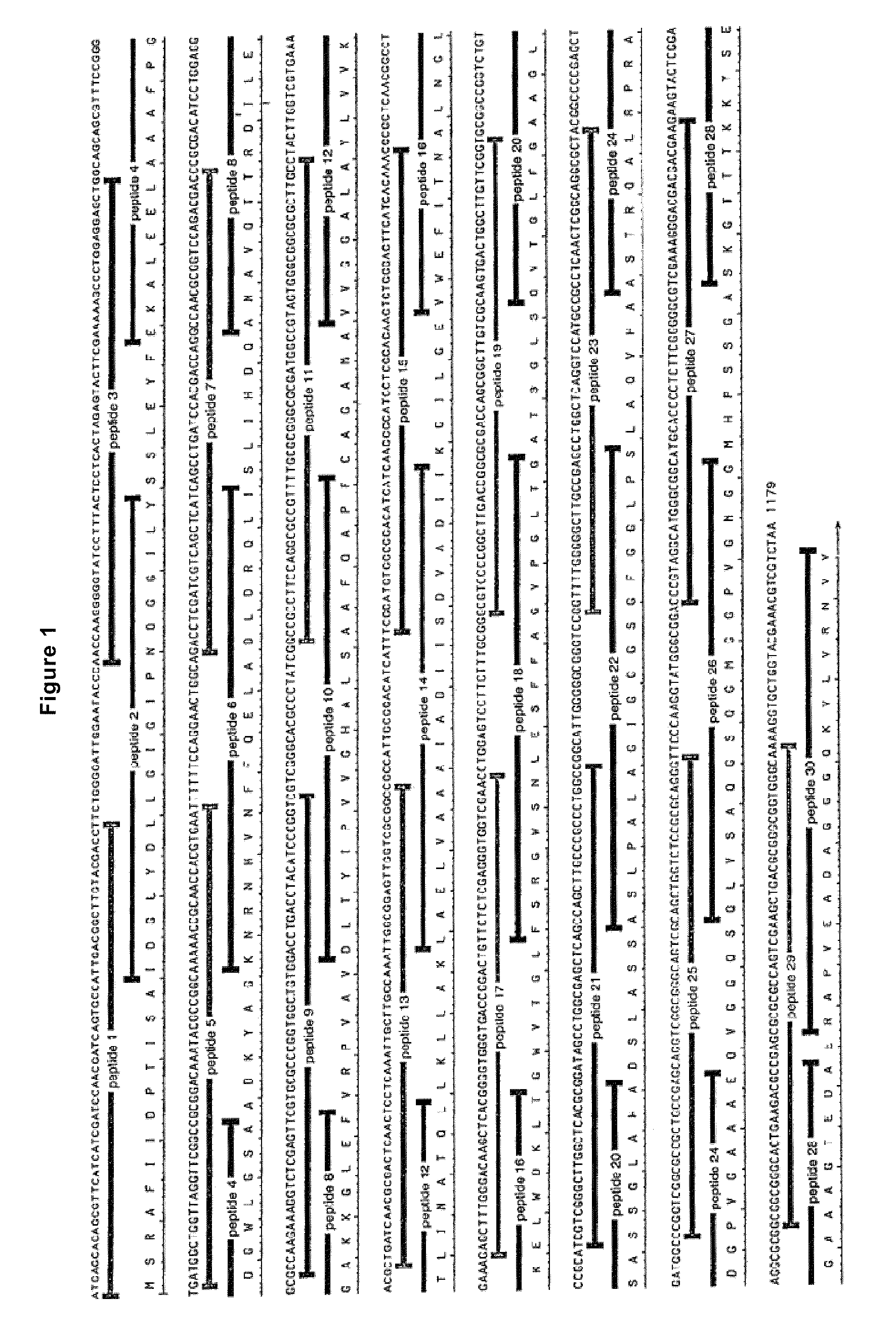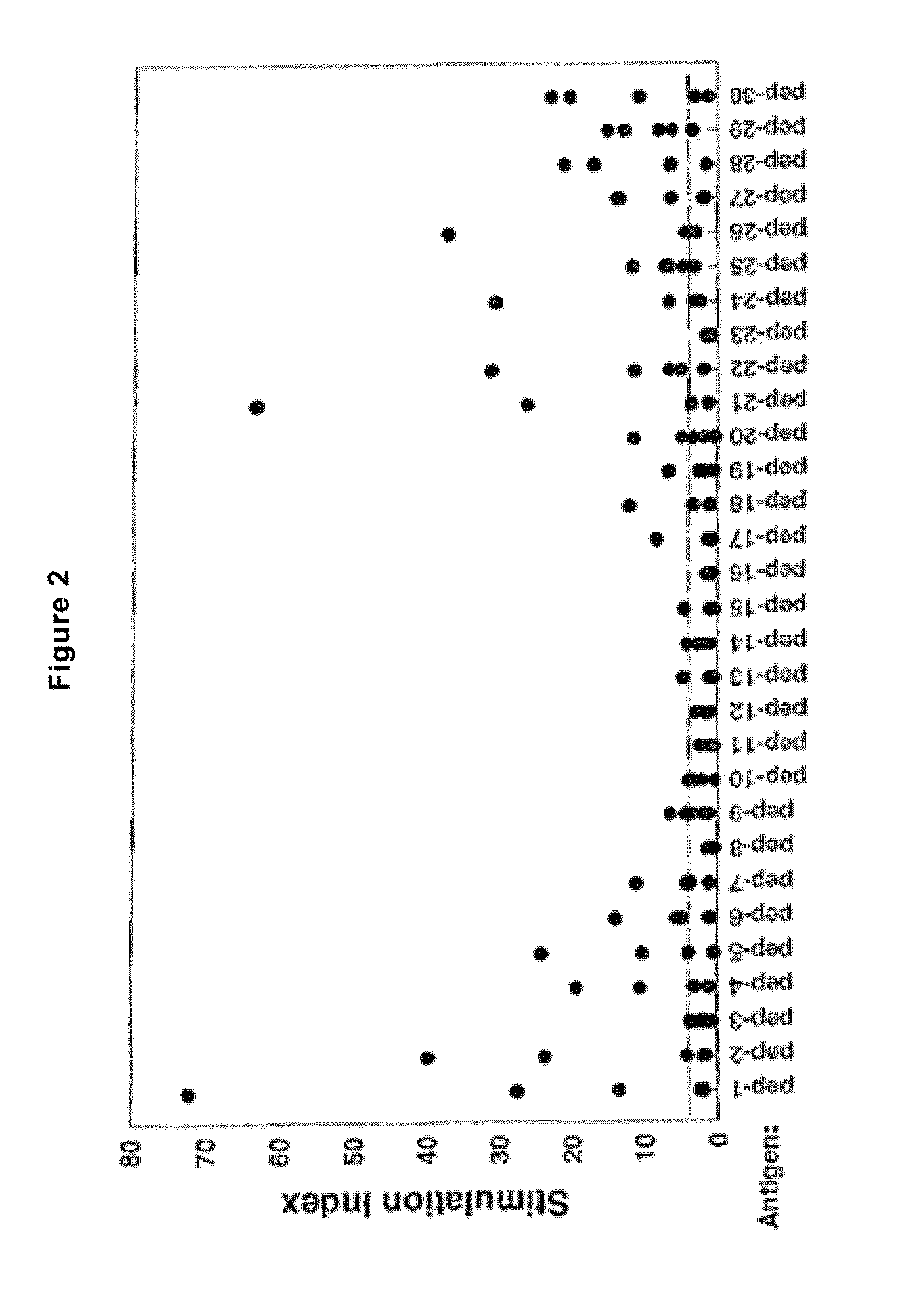Modified antigens
a technology of mycobacterium tuberculosis and antigens, applied in the field of modified mycobacterium tuberculosis rv3616c proteins, can solve the problems of fatigue, weight loss, fever and persistent cough, and insufficient treatment to prevent the spread of the disease, and achieve the effect of improving expression
- Summary
- Abstract
- Description
- Claims
- Application Information
AI Technical Summary
Benefits of technology
Problems solved by technology
Method used
Image
Examples
example 1
Identification of Rv3616c as a Latent TB Vaccine Target
[0796]The gene Rv3616c encodes for a conserved hypothetical alanine and glycine rich protein.
[0797]Rv3616c was selected based on a genome-wide analysis of Mycobacterium tuberculosis genes associated with dormancy phase maintenance and infectivity as in Murphy and Brown BMC. Infect. Dis. 2007 7:84-99. Potential dormancy phase gene targets in Mycobacterium tuberculosis were prioritised through a bioinformatics meta-analysis of published genome-wide DNA microarray datasets of bacterial gene expression under simulated dormancy conditions. Subcellular localisation of M. tuberculosis proteins encoded by genes, was subsequently carried out on the entire genome to identify vaccine targets.
[0798]Briefly, experimental conditions in the dormancy models were quite varied so a zero to five scoring system was developed to normalise these data based upon two criteria: 1) the relevance of the experimental conditions to the dormant state and 2) ...
example 2
Rv3616c Epitope Prediction
Method
[0810]T cell epitope prediction was based on the following approaches:
[0811]
PredictionNameURL / ReferencesCD4 andMultipredwebsite: antigen.i2r.a-star.edu.sg / multipred / CD8Zhang, G. L., Khan, A. M., Srinivasan, K. N., August, J. T. andBrusic, V. (2005) “MULTIPRED: a computational system forprediction of promiscuous HLA binding peptides” Nucleic AcidsRes. 33, W172-W179.SVMHCwebsite: www-bs.informatik.uni-tuebingen.de / SVMHC“Prediction of MHC class I binding peptides, using SVMHC.”Pierre Dönnes and Arne Elofsson in: BMC Bioinformatics 20023: 25CD4ProPredwebsite: www.imtech.res.in / raghava / propred / Singh, H. and Raghava, G. P. S. (2001) “ProPred: Prediction ofHLA-DR binding sites.”Bioinformatics, 17(12), 1236-37.Tepitope2In house program based on:H. Bian, J. Hammer (2004) “Discovery of promiscuous HLA-II-restricted T cell epitopes with TEPITOPE.” Methods 34: 468-75CD8nHLAwebsite: www.imtech.res.in / raghava / nhlapred / Bhasin M. and Raghava G P S (2006) “A hybrid ap...
example 3
Rv3616c Epitope Identification
[0815]A range of 30 overlapping peptides covering the full length of Rv3616c were prepared (see FIG. 1 for details and SEQ ID Nos: 127-156) and tested for their ability to stimulate PBMC from four PPD+ donors.
[0816]The data, shown in FIG. 2, reveals that peptides 1-7 and 17-30 were immunogenic for these individuals. These peptides are suitably present within the sequence of the modified Rv3616c proteins of the invention.
[0817]It should be noted that peptides 8-16 (amino acid residues 92-215) may be immunogenic in other individuals of differing HLA type.
PUM
 Login to View More
Login to View More Abstract
Description
Claims
Application Information
 Login to View More
Login to View More - R&D
- Intellectual Property
- Life Sciences
- Materials
- Tech Scout
- Unparalleled Data Quality
- Higher Quality Content
- 60% Fewer Hallucinations
Browse by: Latest US Patents, China's latest patents, Technical Efficacy Thesaurus, Application Domain, Technology Topic, Popular Technical Reports.
© 2025 PatSnap. All rights reserved.Legal|Privacy policy|Modern Slavery Act Transparency Statement|Sitemap|About US| Contact US: help@patsnap.com



